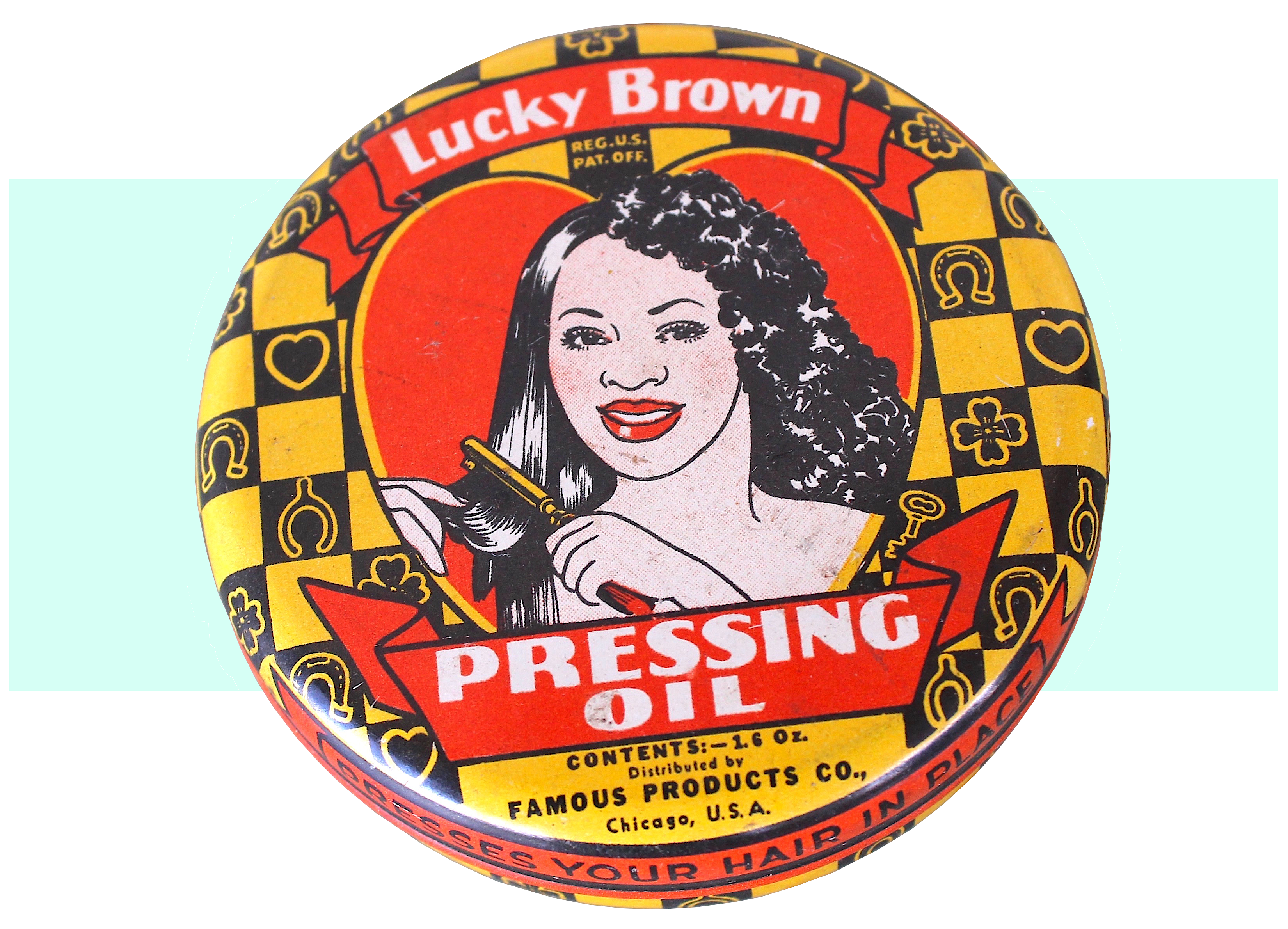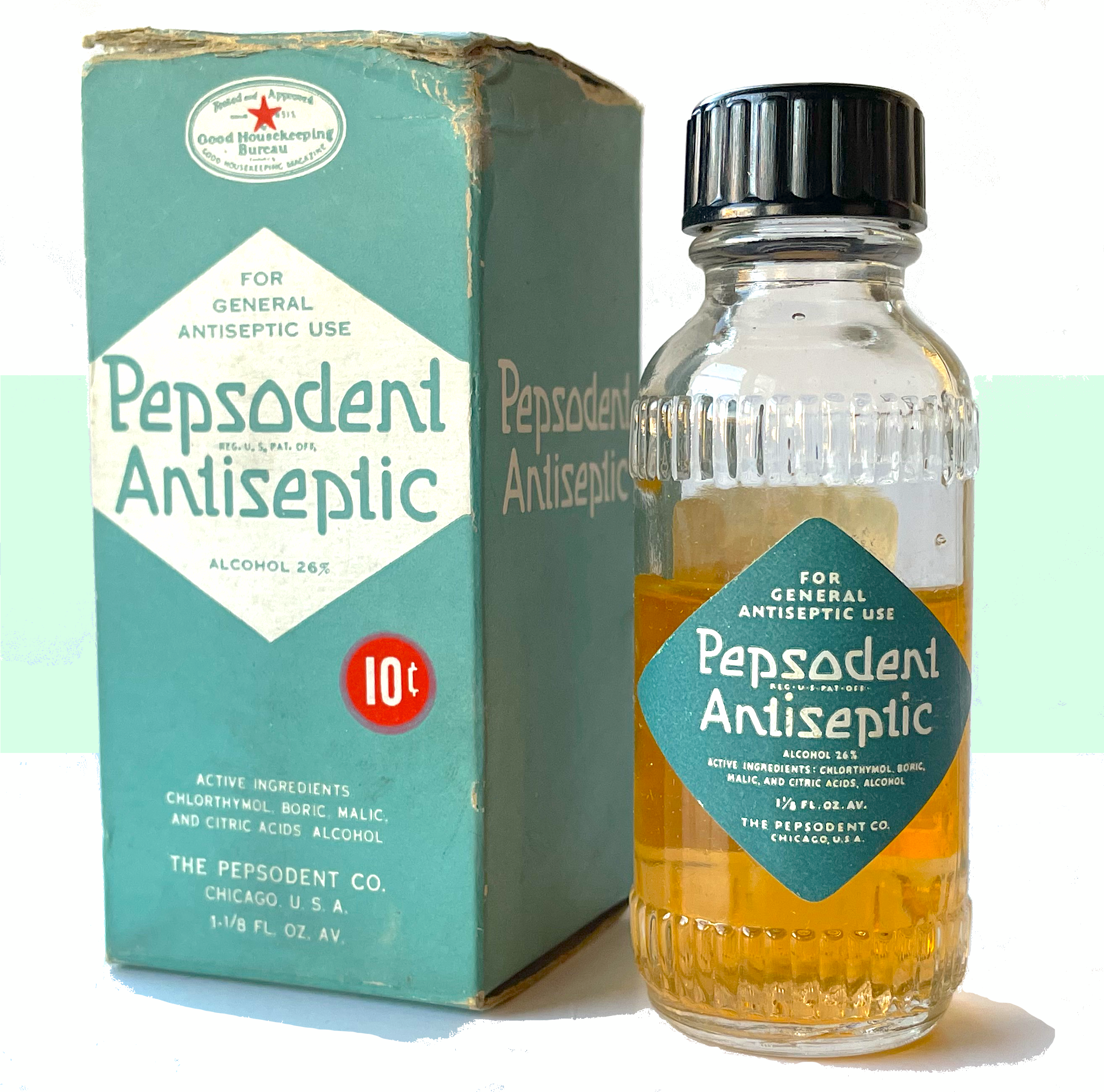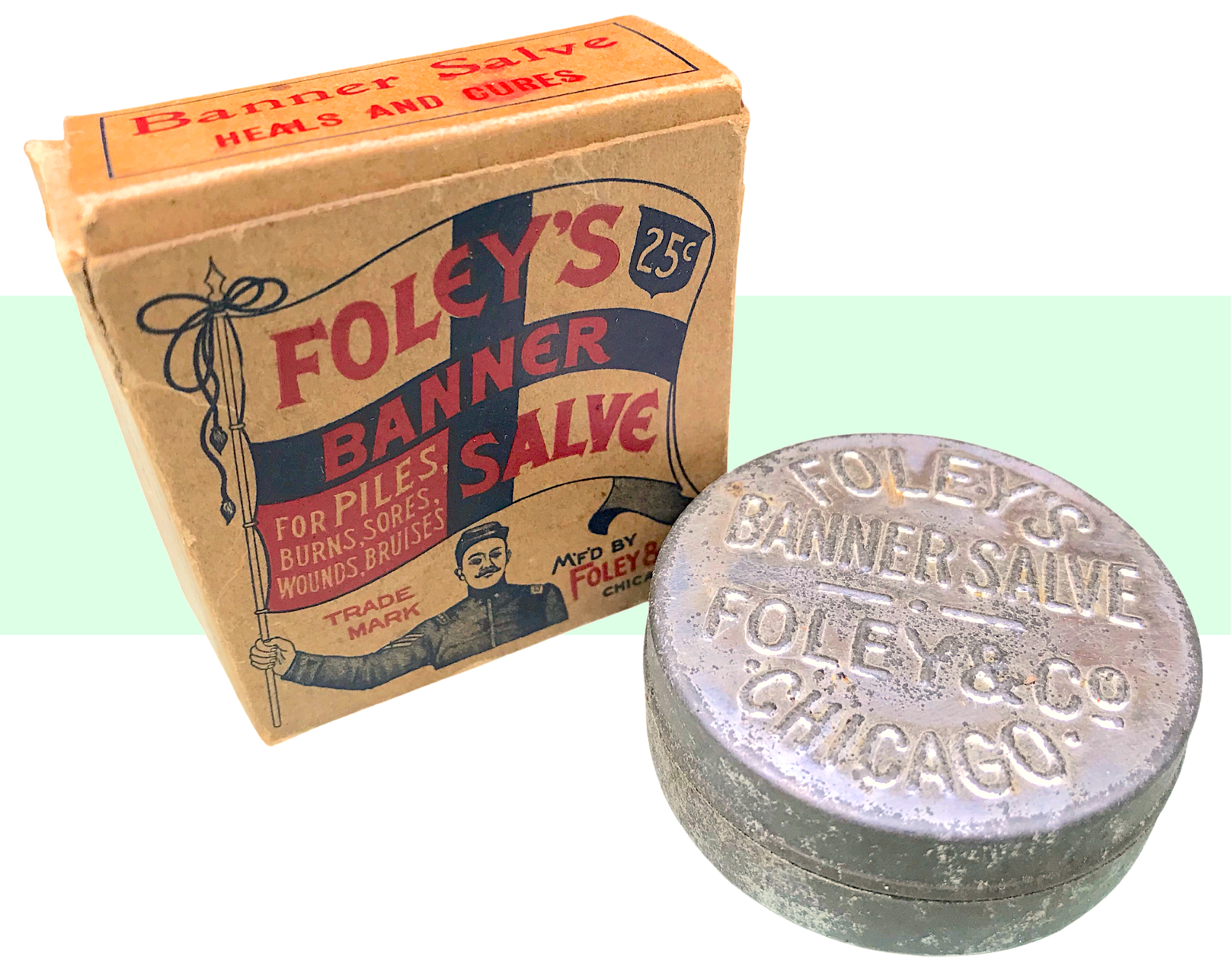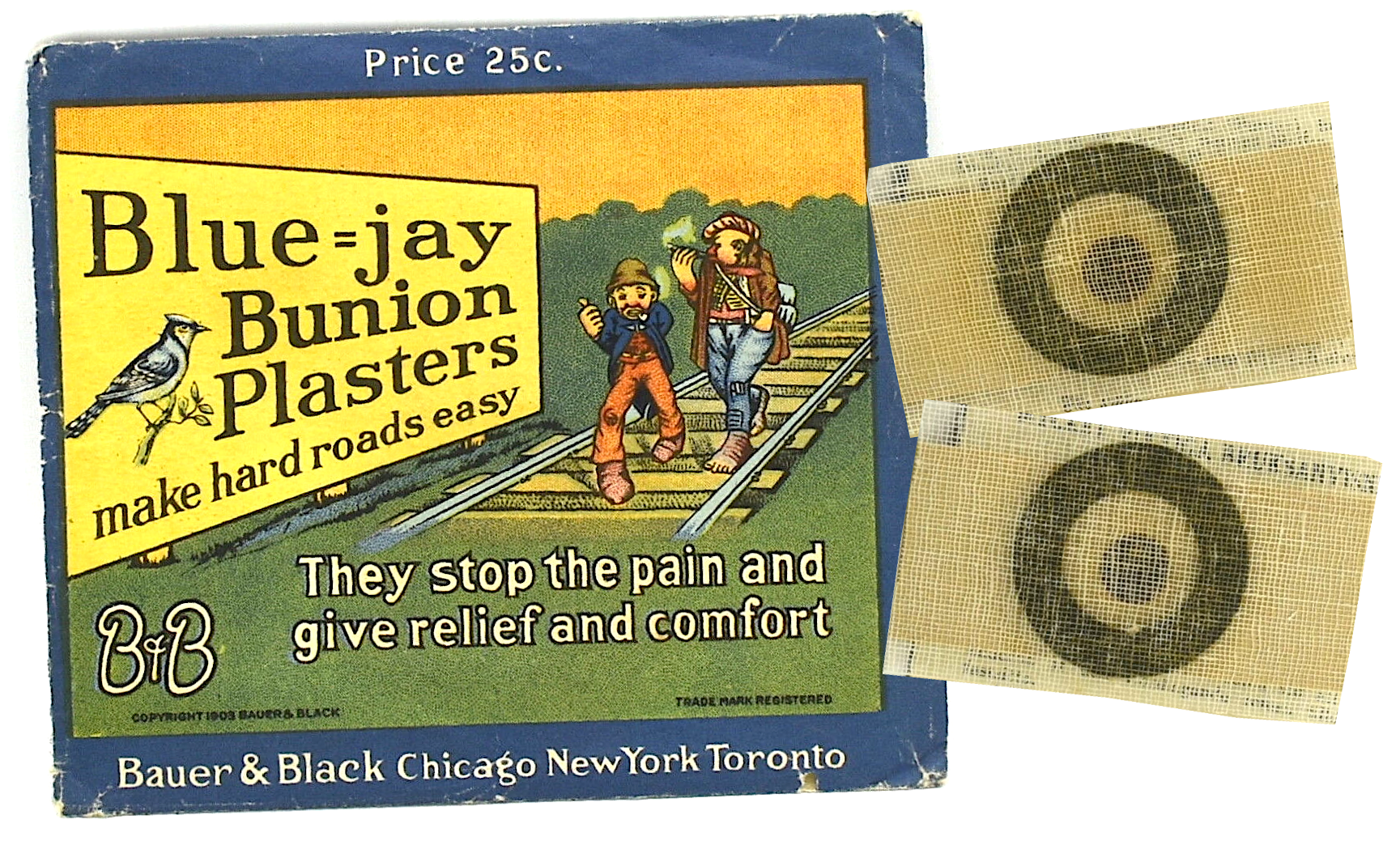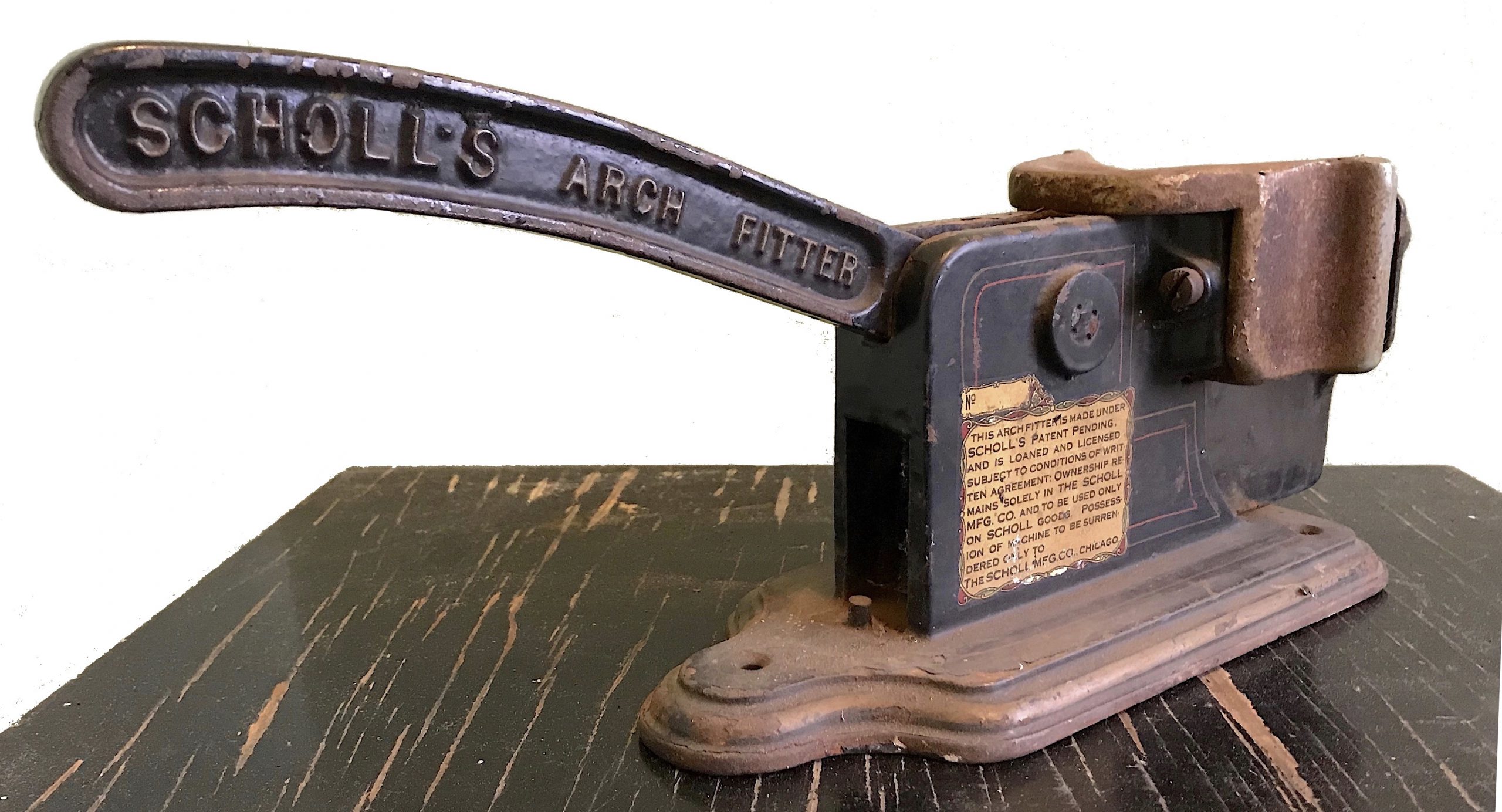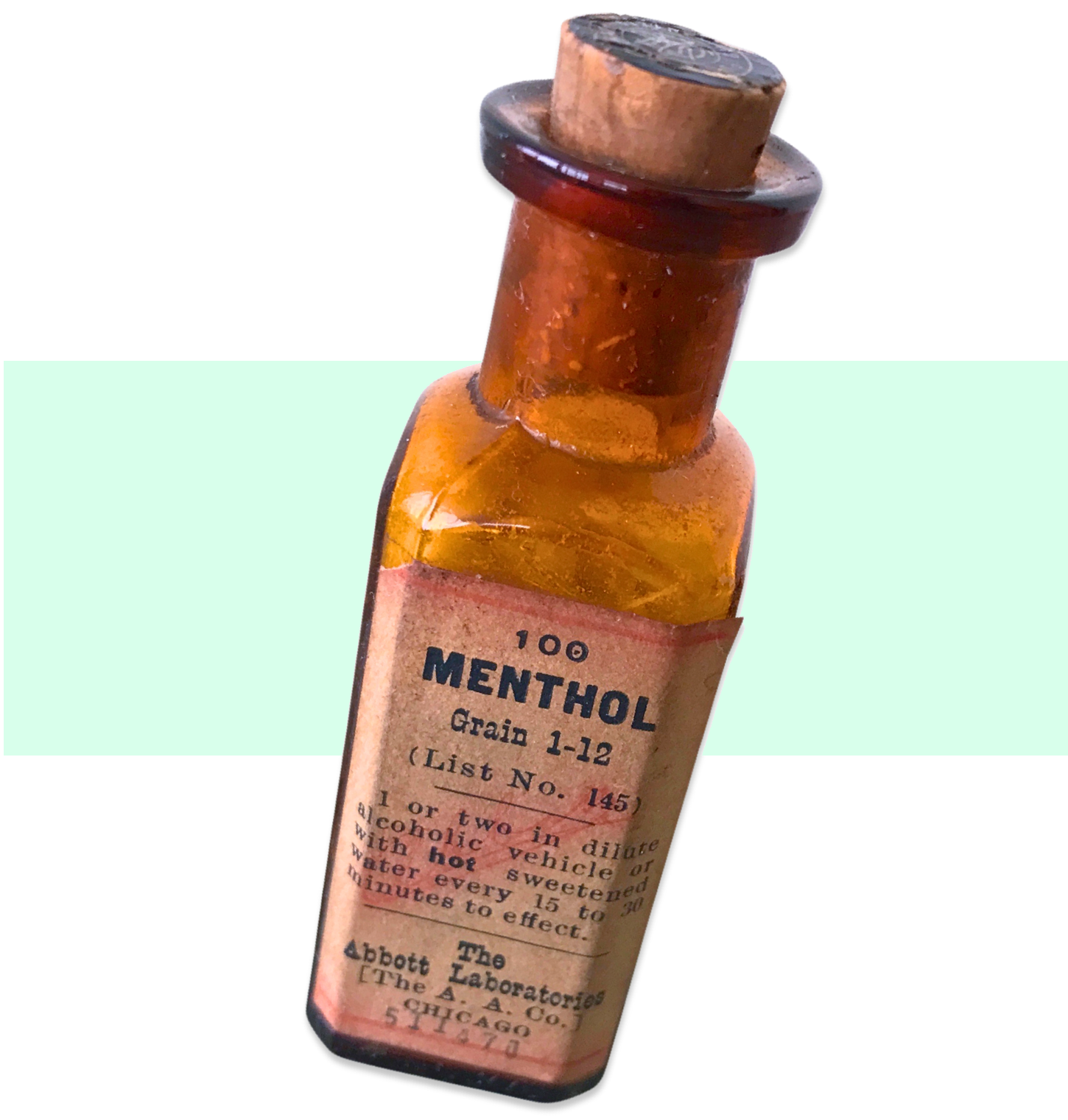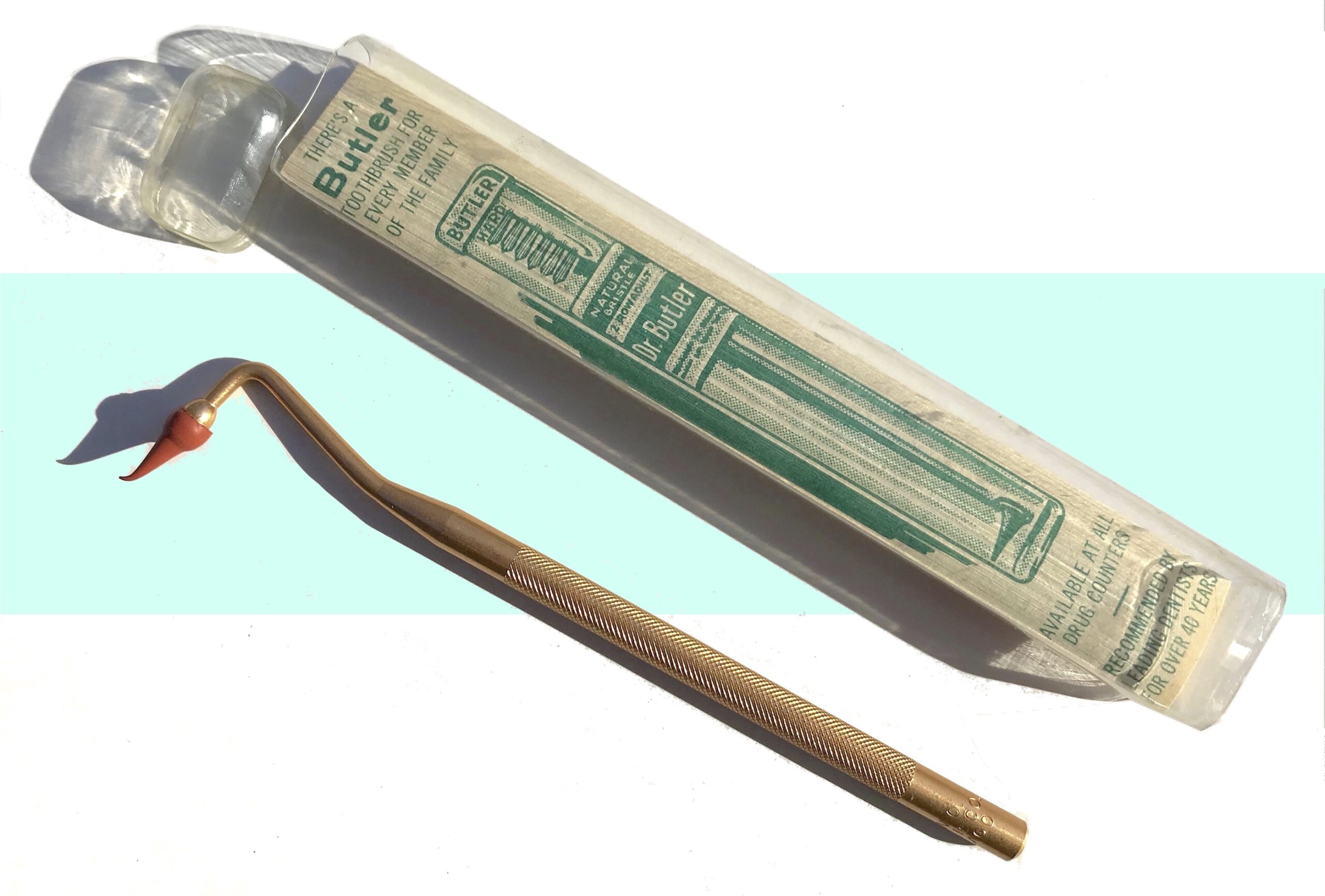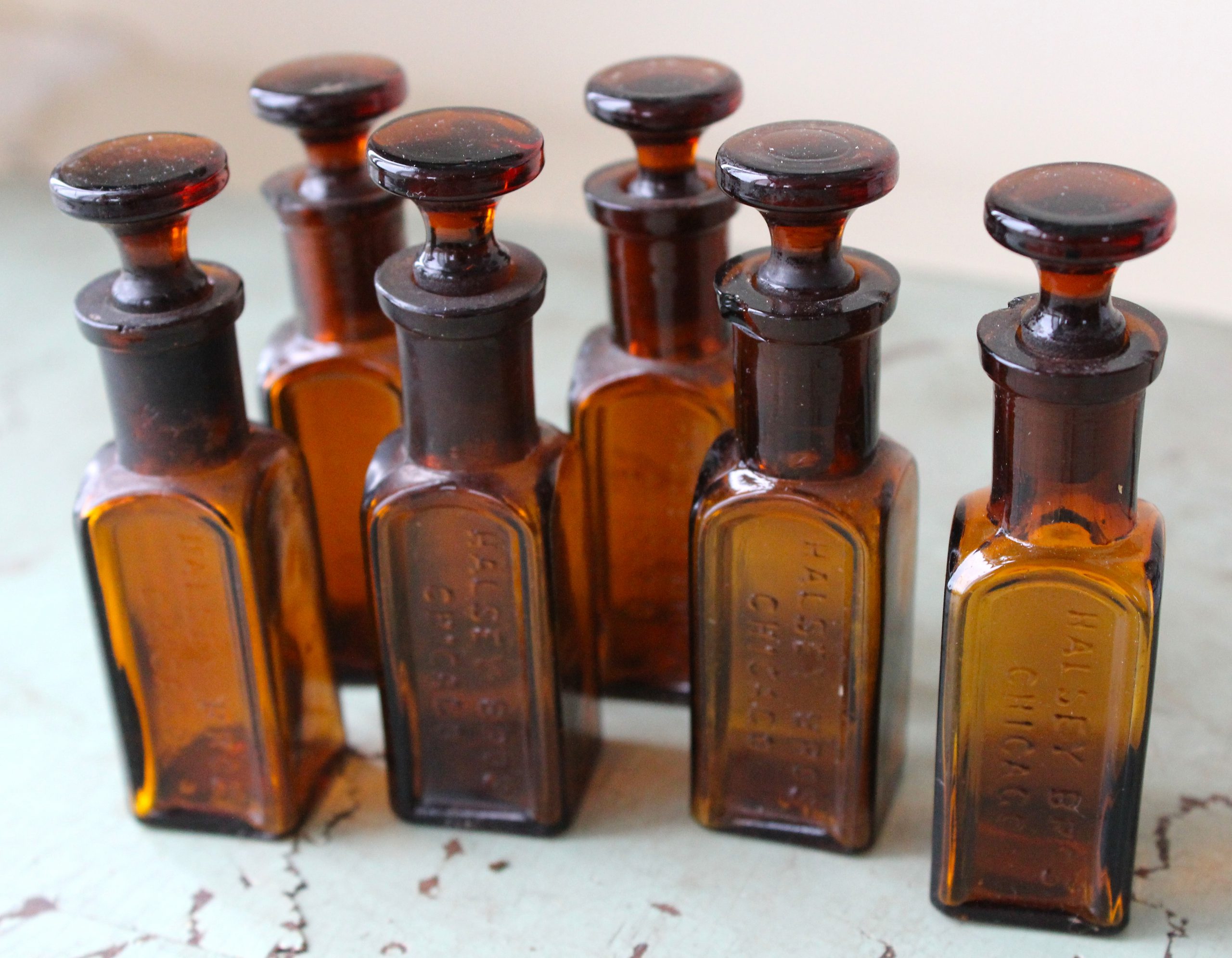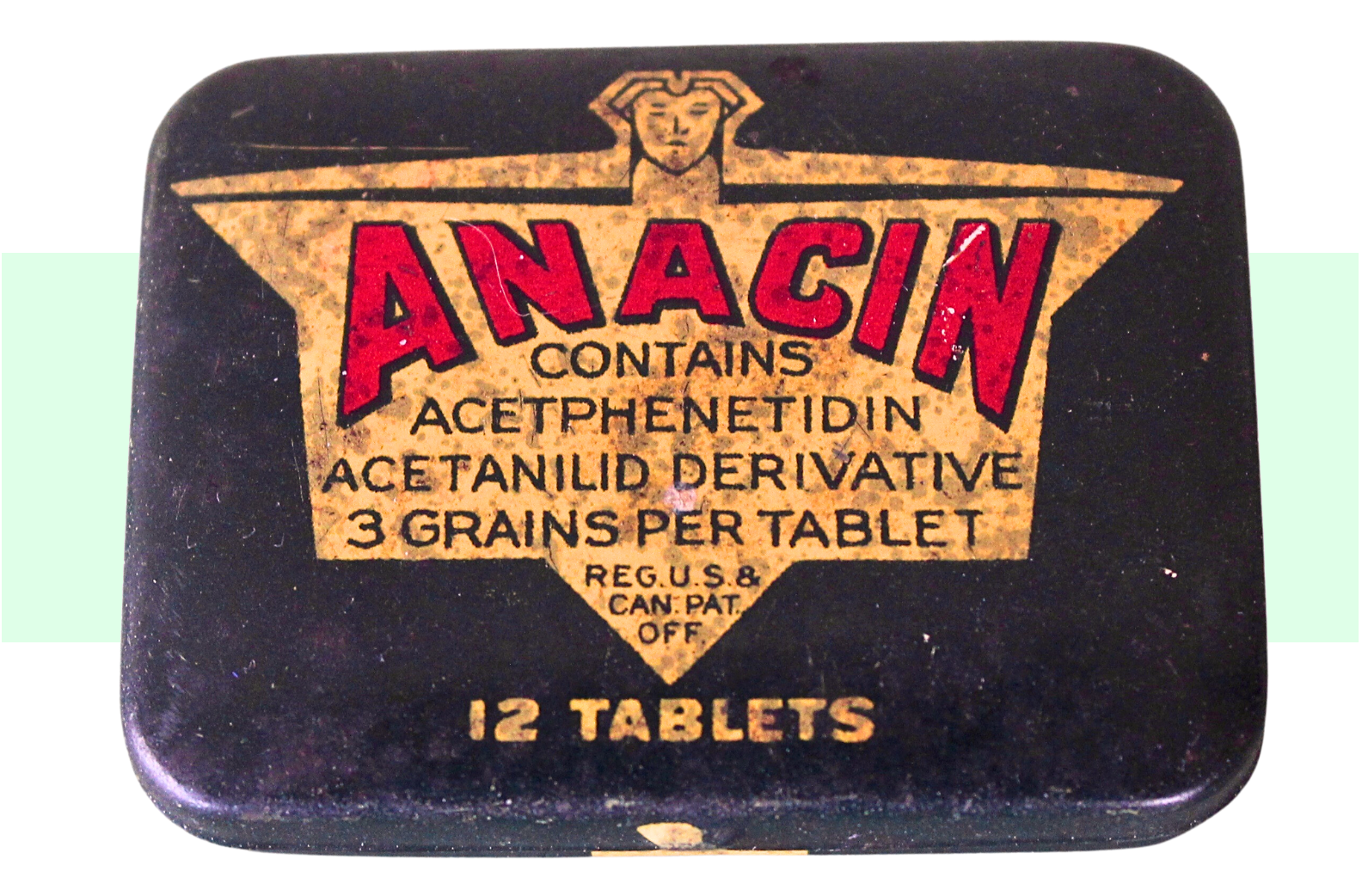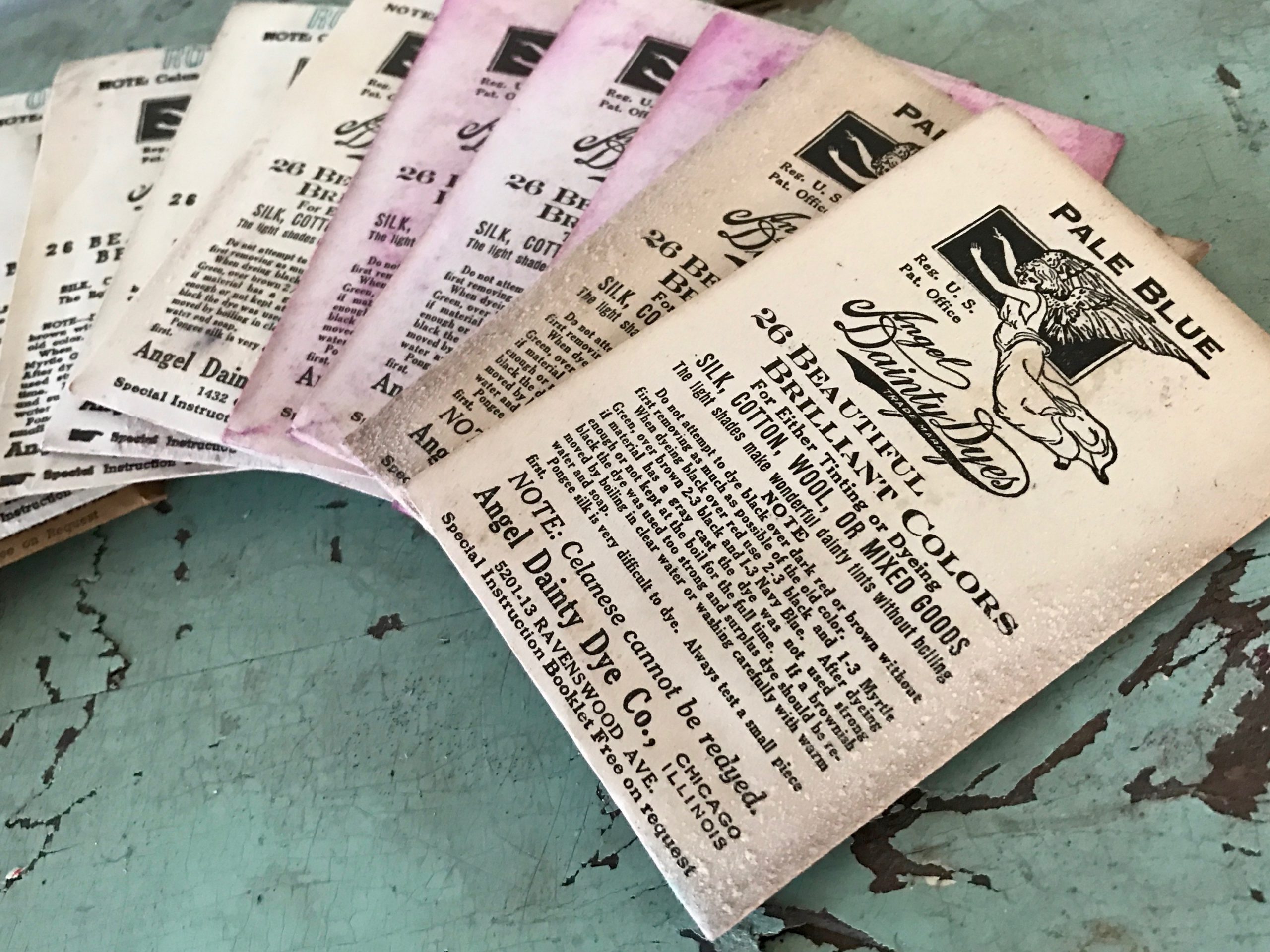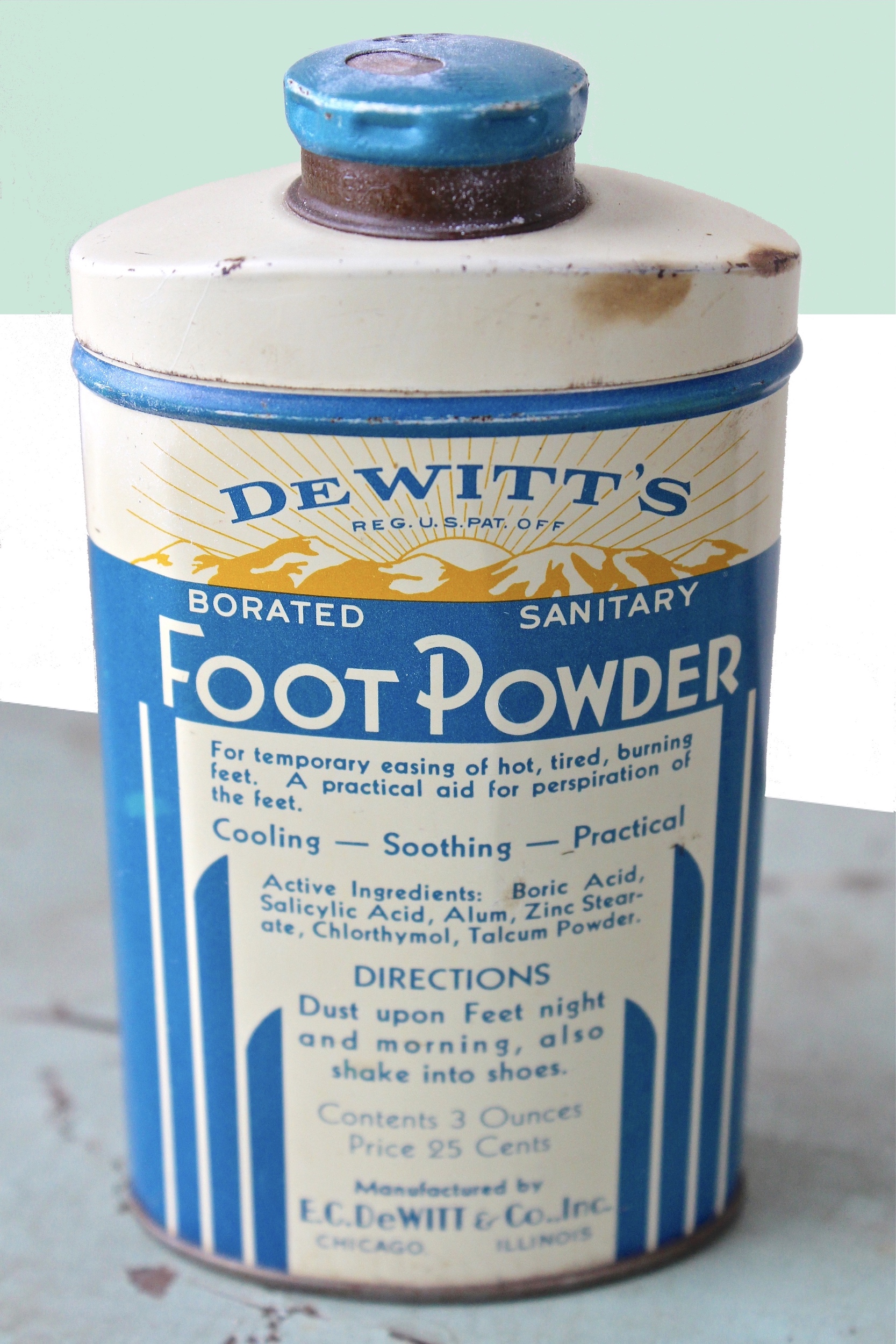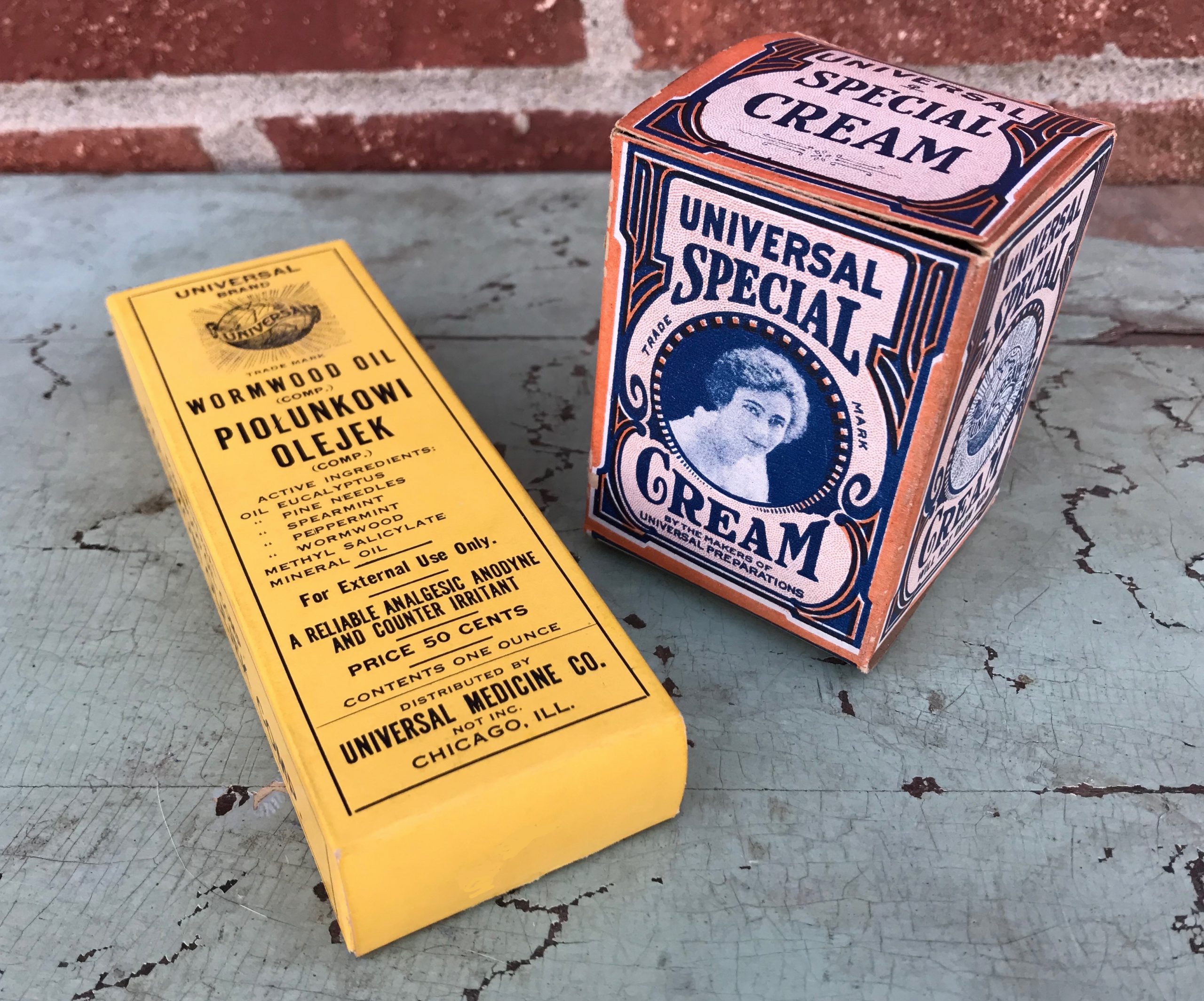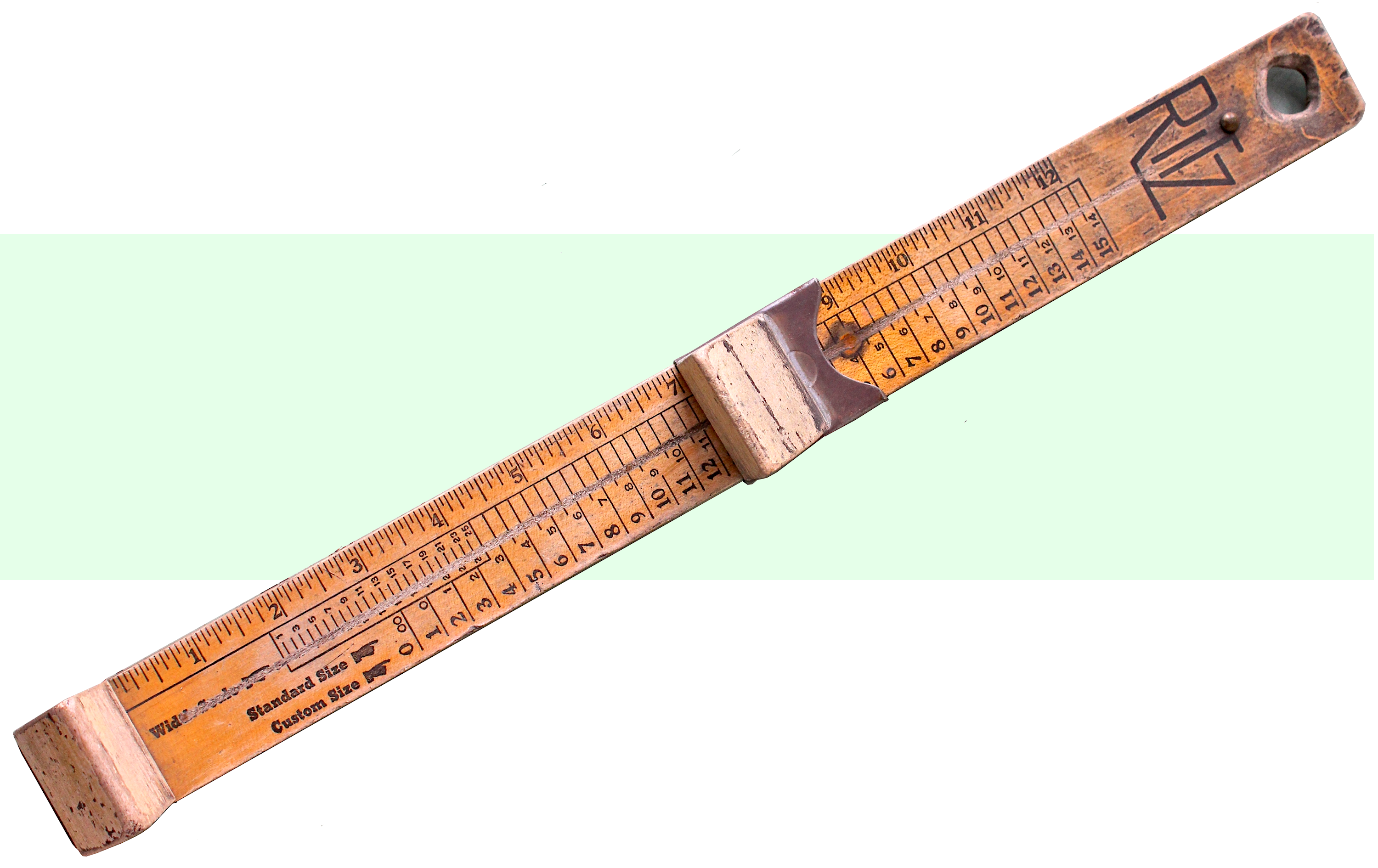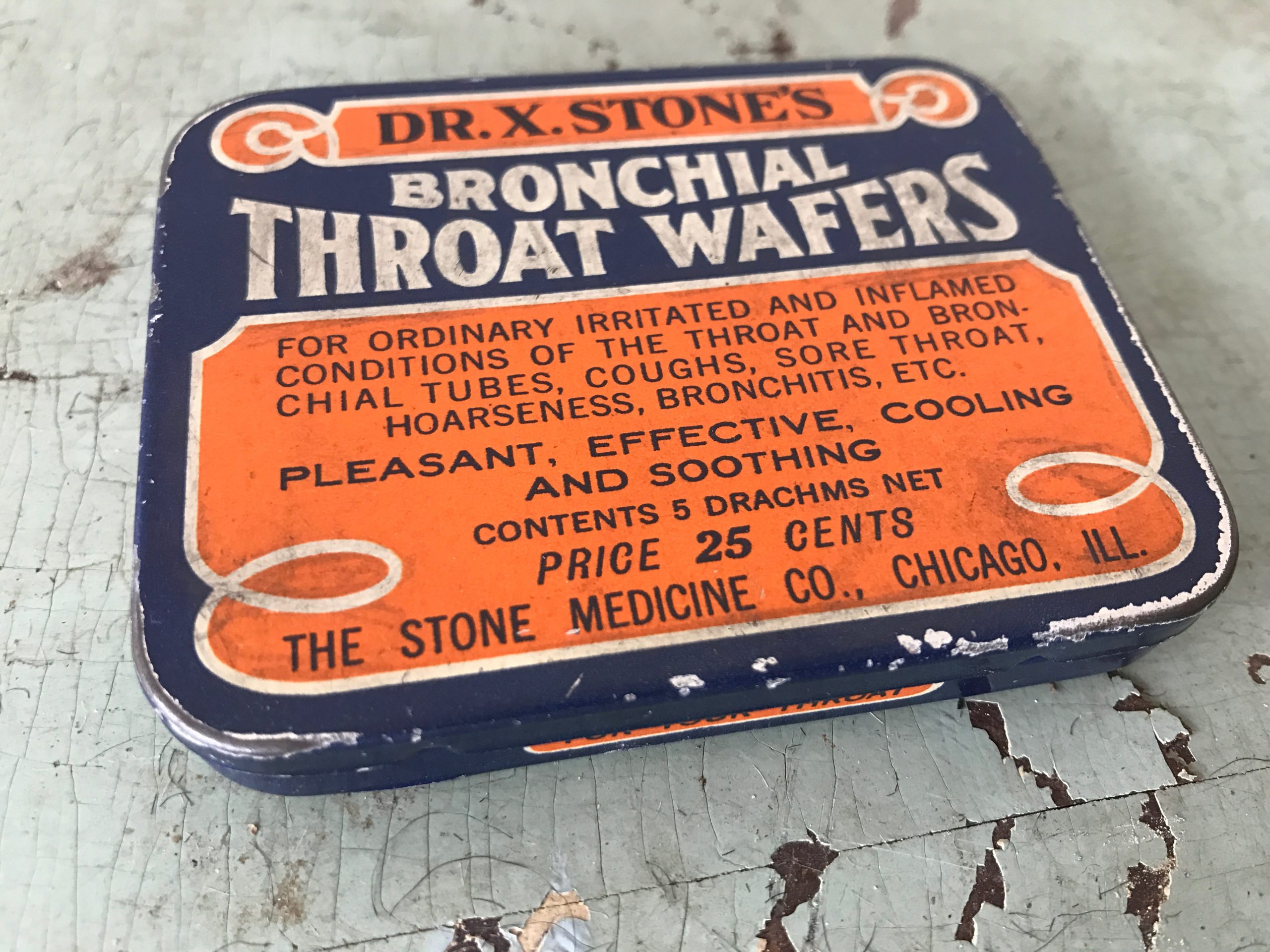Museum Artifacts: “Lucky Brown” Hair Pressing Oil (1938) and “Slick Black” Promo Poster, c. 1940s
Made By: Valmor Products Co. / Famous Products Co., 2241 S. Indiana Ave., Chicago, IL
Whether you enjoy debating the ethics of cultural appropriation, the definition of true art, or the line between female empowerment and objectification, the story of the Valmor Products Company basically covers all the bases—like a pulp-novel catalog of 20th century American contradictions.

